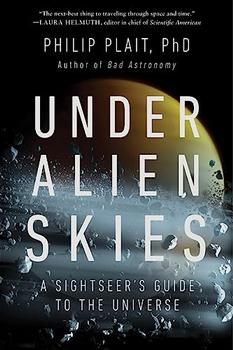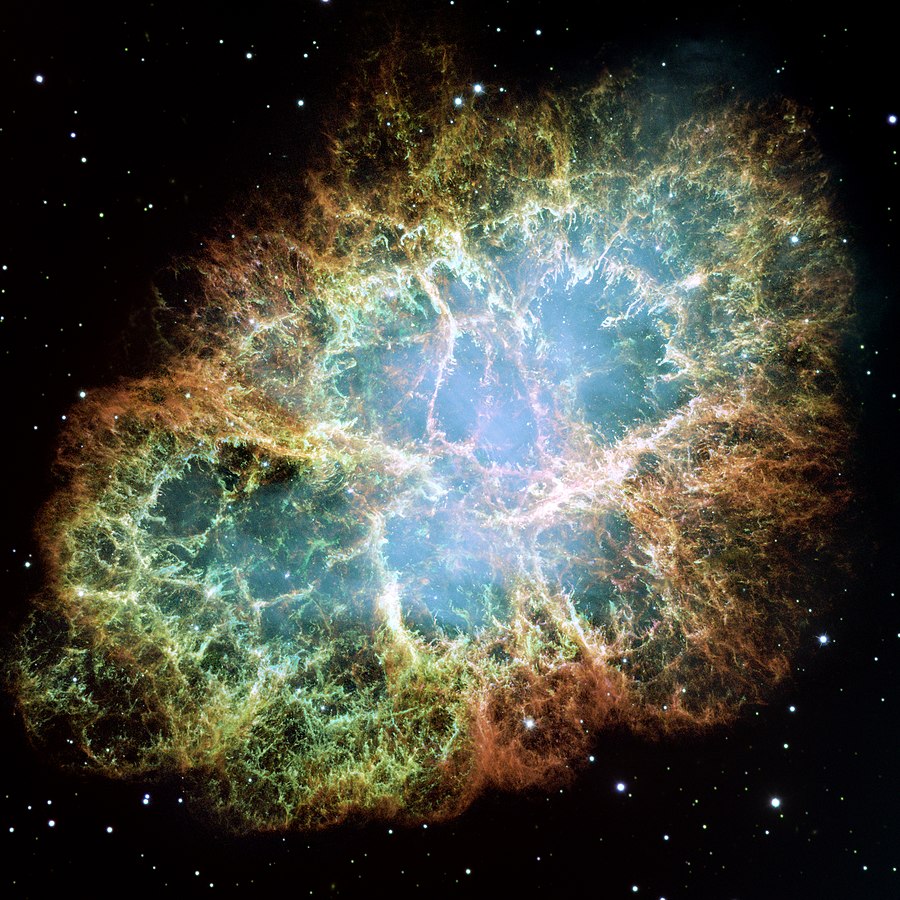Summary | Excerpt | Reviews | Beyond the Book | Read-Alikes | Genres & Themes | Author Bio

A Sightseer's Guide to the Universe
by Philip PlaitThis article relates to Under Alien Skies
 In Under Alien Skies, Dr. Philip Plait takes readers on a tour of the universe, including discussing what it might be like to live on planets in a variety of different star systems. A major factor to consider for this thought exercise is the mass of the star or stars involved, and what point they are at in their life cycles.
In Under Alien Skies, Dr. Philip Plait takes readers on a tour of the universe, including discussing what it might be like to live on planets in a variety of different star systems. A major factor to consider for this thought exercise is the mass of the star or stars involved, and what point they are at in their life cycles.
Stars are formed out of nebulae, huge clouds of dust and gas drifting in space. When areas of these clouds become dense enough, gravity will begin to pull them together. Once this process has begun, large clumps of raw material will condense. The center of these clumps heats up, forming protostars, while material that develops an orbit around them without being drawn in may eventually become a planet or other astronomical object.
If the protostar has enough mass, eventually its core will heat up enough for the fusion of hydrogen into helium to occur, at which point it becomes a main sequence star. Stars are classified based on their surface temperature, which affects the star's color, and luminosity. These characteristics are also affected by the star's mass, as the more mass it has the hotter and brighter it will be. How long a star will remain in the main sequence phase also depends on its mass. While it may seem that more massive stars should last longer due to having more material to fuse, in actuality their higher gravity means that fusion occurs faster. The largest stars may only last a few million years, while the smallest might shine for tens of billions.
What happens when a star starts to burn out is also dependent on its mass. Small stars will simply collapse in on themselves. These remains are called white dwarfs. Larger stars also collapse, but their greater mass means the remains are hot enough to fuse the helium they have already produced into carbon and oxygen. This fusion causes the star to balloon outward to form a red giant, which will eventually burn itself out and also collapse into a white dwarf. This is what will happen to the sun, likely in several billion years.
In even more massive stars this process will continue past carbon, fusing heavier and heavier elements and concentrating mass until it begins to implode. This implosion strikes the star's core, causing a massive explosion called a supernova. Supernovae fling these heavier elements out into space, where they will someday develop into new systems. The majority of supernovae then collapse into neutron stars, which are incredibly dense. Only the most massive stars will continue collapsing further to form black holes, objects so dense that nothing that gets too close can escape the pull of their gravity.
This cycle, from gas cloud to protostar to main sequence star and ending in some form of collapse, can be complicated by interactions with the objects the star is surrounded by. Nebulae often produce large numbers of stars, and one gathering of material often breaks into multiple protostars, forming systems of two or three stars in close proximity. In this case, interactions between these stars cause other reactions. For instance, if one of a pair of binary stars collapses into a white dwarf, it may draw mass from the other star into itself, triggering a supernova that neither star would have been massive enough to cause on its own.
Remnant of a supernova explosion, courtesy of NASA and the Space Telescope Science Institute
Filed under Medicine, Science and Tech
![]() This "beyond the book article" relates to Under Alien Skies. It originally ran in April 2023 and has been updated for the
April 2024 paperback edition.
Go to magazine.
This "beyond the book article" relates to Under Alien Skies. It originally ran in April 2023 and has been updated for the
April 2024 paperback edition.
Go to magazine.
Your guide toexceptional books
BookBrowse seeks out and recommends the best in contemporary fiction and nonfiction—books that not only engage and entertain but also deepen our understanding of ourselves and the world around us.